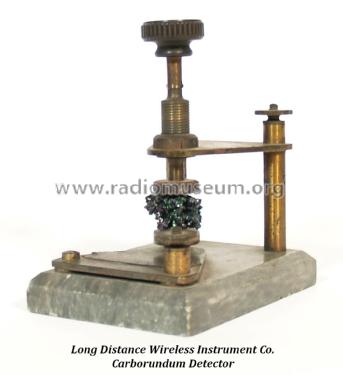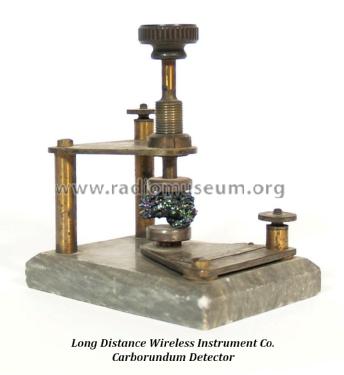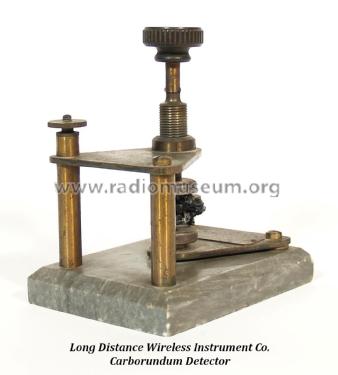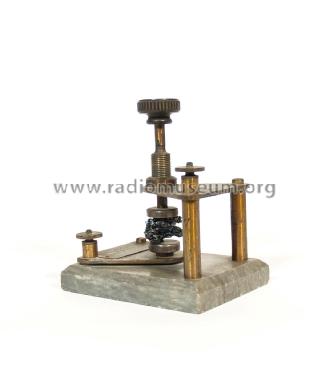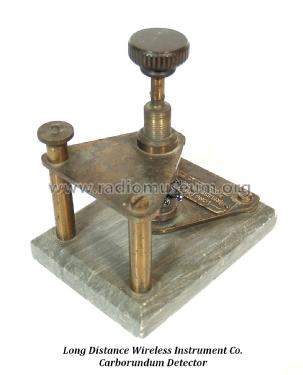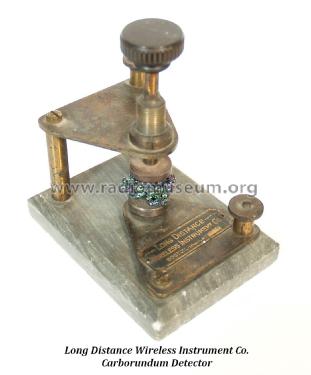Carborundum Crystal Detector
Long Distance Wireless Instrument Company; Boston, MA
- Pays
- Etats-Unis
- Fabricant / Marque
- Long Distance Wireless Instrument Company; Boston, MA
- Année
- 1909 ?
- Catégorie
- Pièce de radio / composant (pas un module)
- Radiomuseum.org ID
- 329034
- Principe général
- Détecteur à galène ou semi-conducteur
- Gammes d'ondes
- - sans
- Tension / type courant
- Pas d'alimentation nécessaire
- Haut-parleur
- - - Pas de sortie basse fréquence
- Matière
- Matériaux divers
- De Radiomuseum.org
- Modèle: Carborundum Crystal Detector - Long Distance Wireless
- Forme
- Modèle de table générique
- Remarques
-
Marble based carborundum crystal detector by the Long Distance Wireless Instument Company.
Invented in 1906 by Henry H. C. Dunwoody, this consisted of a piece of silicon carbide (SiC, then known by the trade name carborundum), either clamped between two flat metal contacts, or mounted in fusible alloy in a metal cup with a contact consisting of a hardened steel point pressed firmly against it with a spring. Carborundum, an artificial product of electric furnaces produced in 1893, required a heavier pressure than the cat whisker contact.The carborundum detector was popular[ because its sturdy contact did not require readjustment each time it. was used, like the delicate cat whisker devices.
- Auteur
- Modèle crée par Alan Larsen. Voir les propositions de modification pour les contributeurs supplémentaires.
- D'autres Modèles
-
Vous pourrez trouver sous ce lien 4 modèles d'appareils, 4 avec des images et 0 avec des schémas.
Tous les appareils de Long Distance Wireless Instrument Company; Boston, MA
